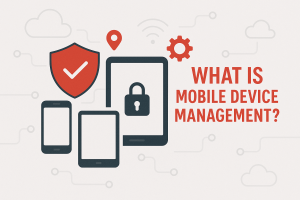In 2025, cloud computing is no longer a one-provider game. As businesses become increasingly digital, they’re leaning into multicloud strategies, utilizing multiple cloud service providers to balance performance, cost, flexibility, and risk. But what exactly is multicloud, and why are so many organizations adopting it?
In this article, we’ll break down what multicloud means, how it works, and the key reasons it’s become a go-to strategy for businesses navigating the modern IT landscape.
Curious if multicloud is right for your business? Talk to Adivi’s cloud experts to explore how a smart multicloud strategy can improve performance, reduce risk, and support your long-term IT goals.
Key Takeaways
- Avoid vendor lock-in with flexible cloud choices.
- Boost uptime by spreading risk across providers.
- Optimize cost and speed per workload.
- Stay compliant with regional regulations.
- Manage complexity with strong governance.
What Is Multicloud?
Multicloud is the use of two or more cloud providers (like AWS, Microsoft Azure, Google Cloud, or Oracle) within a single business environment. Instead of relying on one vendor for all cloud services, organizations distribute workloads across different platforms based on strengths, costs, geographic locations, or compliance needs.
It’s not to be confused with a hybrid cloud, which blends private (on-premises) and public cloud resources. Multicloud typically refers to the use of multiple public clouds in conjunction with each other.
Why Companies Are Choosing Multicloud in 2025
1. Avoiding Vendor Lock-In
Depending on a single cloud provider can create risks around pricing changes, outages, and lack of flexibility. Multicloud reduces reliance on one vendor and gives businesses more control.
2. Optimizing Performance by Region or Service
Different providers excel in different areas. For instance, AWS might offer better global reach, while Google Cloud may excel at AI workloads. Companies can use the best tool for each task.
3. Strengthening Business Continuity and Disaster Recovery
If one cloud provider goes down, workloads can shift to another. Multicloud adds redundancy and resilience, helping maintain uptime and availability.
4. Meeting Compliance and Data Sovereignty Requirements
Some industries or countries require data to be stored in specific regions. Multicloud enables businesses to store data in the right locations without being restricted to one provider.
5. Controlling Costs Strategically
By using pricing calculators and workload placement tools, businesses can avoid cost spikes by running services where they’re most economical.
Common Challenges of Multicloud
Managing multiple cloud providers offers flexibility, but also complexity. Businesses often face issues with integration, security gaps, increased costs, and lack of visibility. Without a solid strategy, multicloud can become hard to control and secure.
Integration Complexity
Managing multiple platforms increases complexity. It requires skilled IT teams, governance frameworks, and careful monitoring.
Security and Compliance Gaps
Each provider has its own security controls. Without unified policies, businesses risk inconsistent protections across environments.
Data Transfer and Latency Issues
Moving data between clouds can be costly and slow without the right architecture. Planning is essential to reduce friction.
How to Succeed with a Multicloud Strategy
- Start with a clear plan: Know which workloads go where and why.
- Use multicloud management tools: Platforms like VMware, HashiCorp, or IBM Turbonomic can simplify visibility and control.
- Standardize security policies: Use centralized identity, encryption, and access controls.
- Train your team: Ensure your DevOps and IT staff are fluent in multiple platforms.
Final Thoughts
Multicloud isn’t just a buzzword, it’s a practical approach to building a resilient, flexible, and future-ready IT environment. While it comes with complexities, the payoff in agility, performance, and control is leading more businesses to adopt it in 2025 and beyond.
If your company is ready to scale, diversify risk, or optimize cloud costs, a multicloud strategy may be the most effective move forward.
Ready to make multicloud work for your business? Adivi’s cloud strategy and cybersecurity experts can help you design, secure, and manage a multicloud environment built for scale, resilience, and compliance.
FAQ
Is multicloud the same as hybrid cloud?
No. Hybrid cloud mixes public and private clouds. Multicloud uses two or more public cloud providers within one architecture.
Why not just use one cloud provider?
Relying on one vendor limits flexibility, increases risk, and may lead to higher costs or outages. Multicloud offers more control and resilience.
Is multicloud only for large enterprises?
Not at all. SMBs are adopting multicloud for cost savings, backup options, and region-specific compliance needs.
What tools help manage a multicloud environment?
Platforms like VMware, HashiCorp, Azure Arc, and IBM Turbonomic help manage visibility, performance, and policies across clouds.
What are the biggest risks with multicloud?
Complexity. Without a clear plan, it’s easy to lose track of costs, security policies, and resource duplication.


